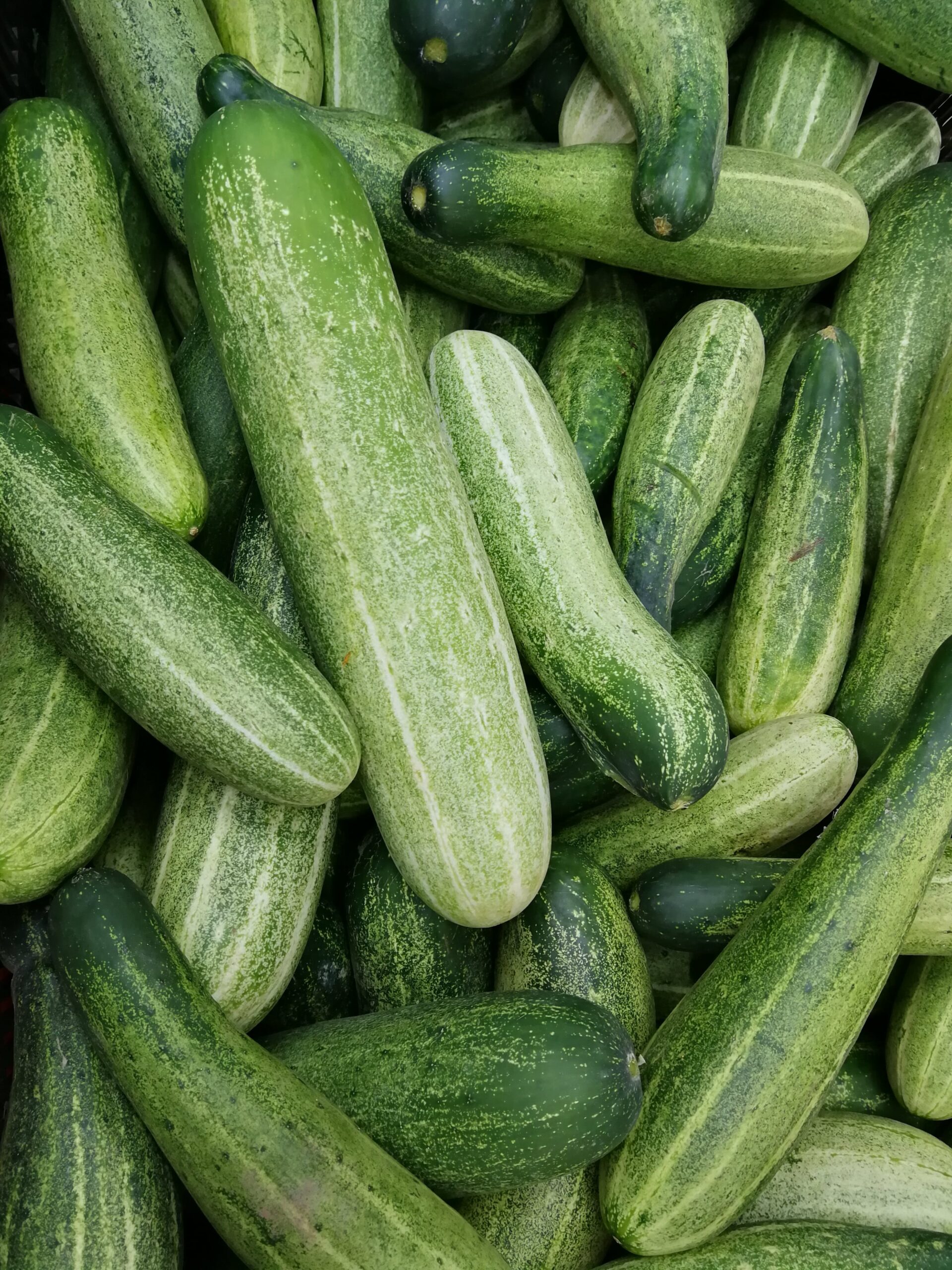Cucumbers probably originated in India from 3000 to 5000 years ago. They were spread into Greece, Italy (and the Roman Empire), and China,
Cucumbers are present in many cuisines and are eaten raw. grilled, in salads, stuffed, fried, preserved, as pickles….
How much does a cucumber weigh?
| Cucumber, Common | |||
|---|---|---|---|
| Small, average | about 5 1/2 inches length | 158g | 5.6oz |
| Medium, average | about 6 to 7 inches length | 201g | 7.1oz |
| Large, average | about 7 1/4 to 8 1/2 inches length | 280g | 9.9oz |
| Cup, Chopped | ? | 133g | 4.7oz |
| Cup, Slices | ? | 119g | 4.2oz |
| Cucumber, Gherkin | |||
| Midget, average | about 2 1/8 inches length | 6g | .2oz |
| Medium, average | about 2 3/4 inches length | 25g | .9oz |
| Large, average | about about 3 inches length | 35g | 1.2oz |
| Cup, Chopped | ? | 160g | 5.6oz |
| Cup, Slices | ? | 153g | 5.4oz |
Cucumbers, with their crisp texture and refreshing taste, are a staple in kitchens around the globe. Beyond their popular role in salads, these versatile vegetables play a part in a wide array of dishes, offering both nutritional benefits and culinary diversity. This blog post delves into the world of cucumbers, exploring their origins, varieties, health benefits, and the many ways they can be incorporated into your diet.
Origins and Varieties
Cucumbers are believed to have originated in India over 3,000 years ago and have since spread worldwide, becoming a beloved ingredient in many cuisines. There are two main types of cucumbers: slicing cucumbers, which are typically consumed raw, and pickling cucumbers, which are smaller and used for making pickles.
Within these categories, there are numerous varieties, including the English cucumber, known for its thin skin and minimal seeds; the Persian cucumber, appreciated for its crunchy texture; and the Kirby cucumber, favored for pickling due to its firmness and bumpy skin.
Nutritional Benefits
Cucumbers are not only delicious but also packed with nutritional benefits. They are composed of about 95% water, making them an excellent hydration source, especially during hot weather. Cucumbers are low in calories but high in important vitamins and minerals, including vitamin K, vitamin C, potassium, and magnesium. Additionally, cucumbers contain antioxidants, such as flavonoids and tannins, which can help combat oxidative stress and promote overall health.
Culinary Uses
Cucumbers are incredibly versatile in the kitchen. Here are just a few ways to enjoy them:
Salads: The most common use for cucumbers is in salads. Their crisp texture and mild flavor make them a perfect complement to a variety of ingredients. Try combining cucumber with tomato, onion, feta cheese, and a simple vinaigrette for a refreshing summer salad.
Pickles: Pickling cucumbers transform them into a tangy and delicious condiment that can be enjoyed on its own or added to sandwiches, burgers, and more. The pickling process is simple and can be done at home with vinegar, salt, and your choice of spices.
Cold Soups: Cucumbers are a key ingredient in cold soups, such as the Spanish gazpacho or the Eastern European tarator. These soups are perfect for cooling down on a hot day and offer a unique way to enjoy the vegetable’s fresh flavor.
Drinks: Cucumber can be used to add a refreshing element to drinks, from infused water to cocktails like the classic gin and tonic. Simply add a few slices of cucumber to your beverage for a subtle, cooling taste.
Sushi: Cucumbers are a staple in sushi, providing a crunchy contrast to the soft texture of the rice and fish. They are often used in rolls, such as the California roll, or served as a side dish, lightly pickled in vinegar.
